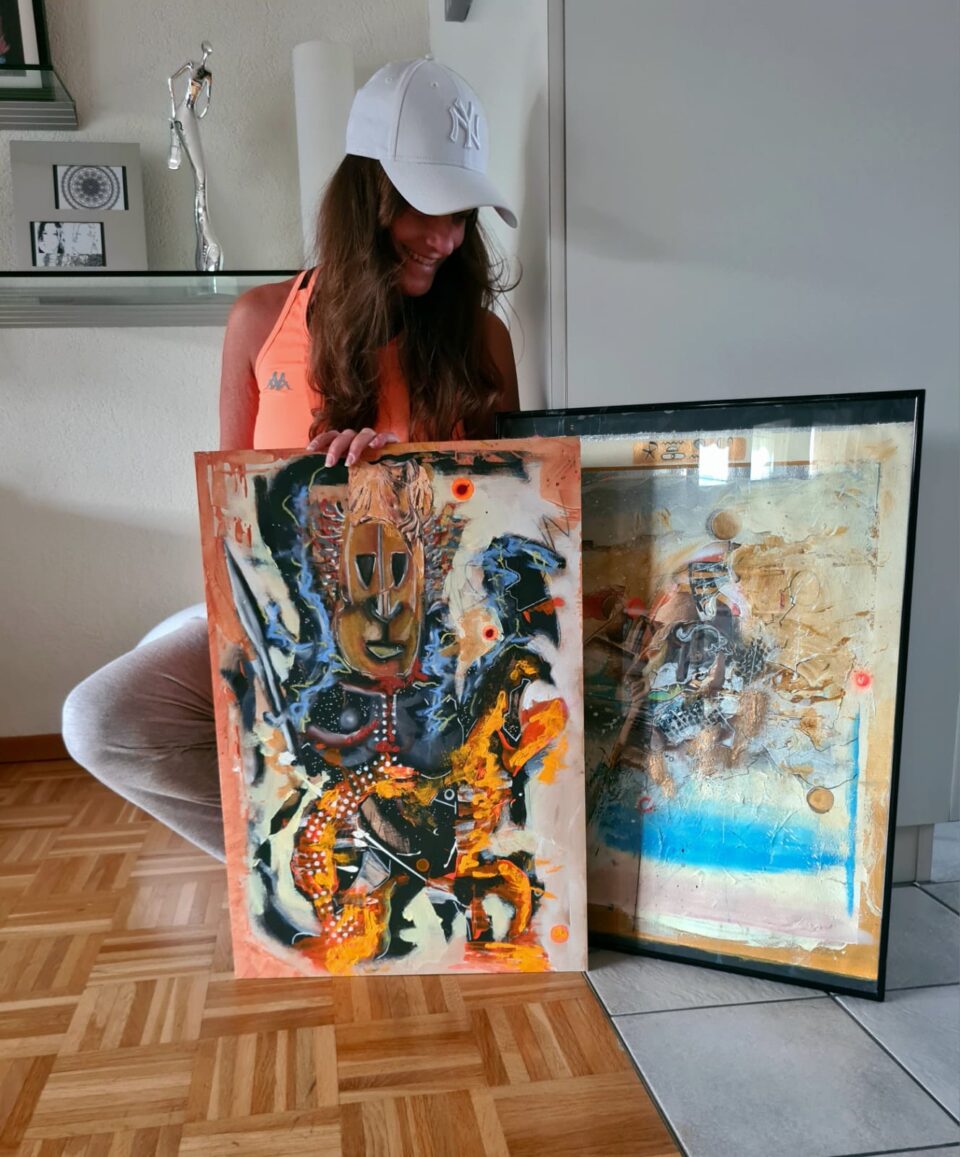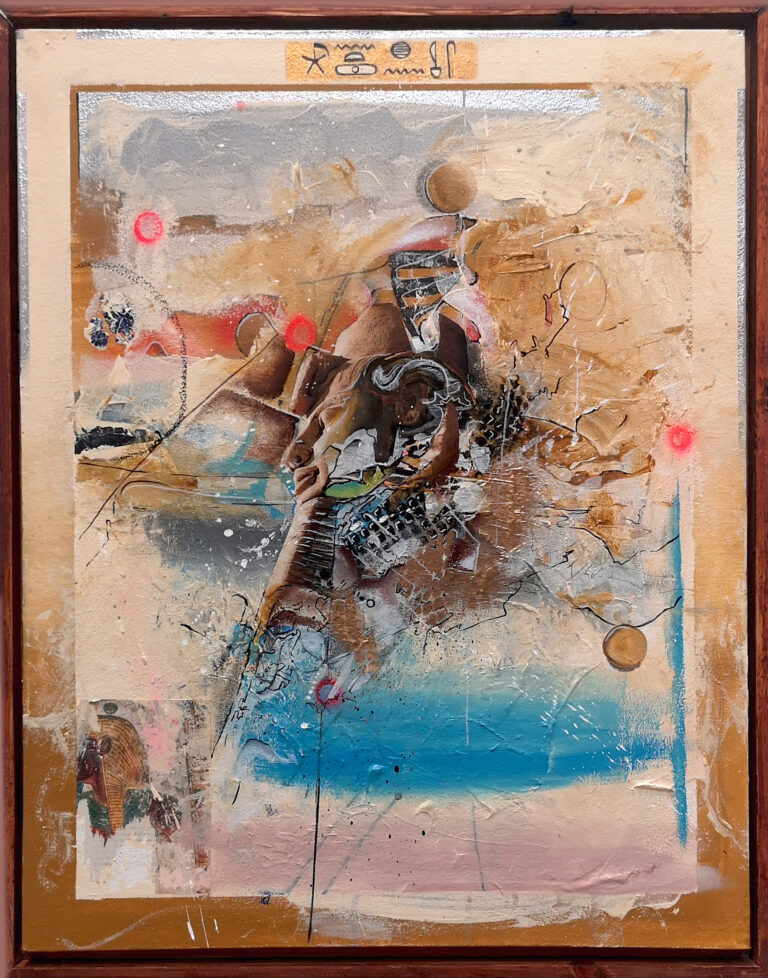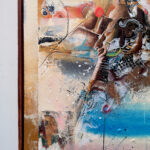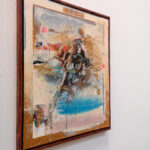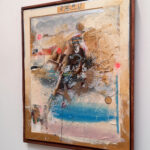-
Dimensions
65 x 75 cm - 25.5" x 29.5"
-
Mediums
Acrylics, House Paint, Pastels, Sprays, Charcoal, Stucco and Collages on canvas - Varnished - Signed on the back
- Exhibited at @fondazionecircolodeilettori (Turin) during a private classical singing performance.
The Pyramids Texts is a mixedmedia painting inspired by one of the earliest Egyptian funerary texts.
In private collection in Switzerland.
“The Pyramids Texts” are the earliest known corpus of ancient Egyptian religious texts.
Written in hieroglyphics, the texts were carved on the underground walls and sarcophagi of the Saqqara pyramids from the end of the fifth dynasty and throughout the sixth dynasty of the Old Kingdom, until the eighth dynasty of the early Intermediate period. Unlike the later Coffin Texts and the Book of the Dead.
The Pyramids Texts were reserved only for the pharaoh and were not illustrated.
Discovery:
French archaeologist and Egyptologist Gaston Maspero, director of the French Institute for Oriental Archaeology in Cairo, arrived in Egypt in 1880.
He chose a site in South Saqqara, a hill that had been mapped by the Prussian Egyptologist Karl Richard Lepsius in 1842 for his first archaeological dig.
There, Maspero found the ruins of a large structure, which he concluded must be the pyramid of Pepi I of the Sixth Dynasty.
During the excavations he was able to gain access to the subterranean rooms, and discovered that the walls of the structure were covered in hieroglyphic text.
Maspero contacted the ‘director of the excavations’ in Egypt, Auguste Mariette, to inform him of the discovery. Mariette concluded that the structure must be a mastaba, as no writing had previously been discovered in a pyramid.
The spells, or utterances, of these Texts were primarily concerned with enabling the transformation of the deceased into an Akh.
